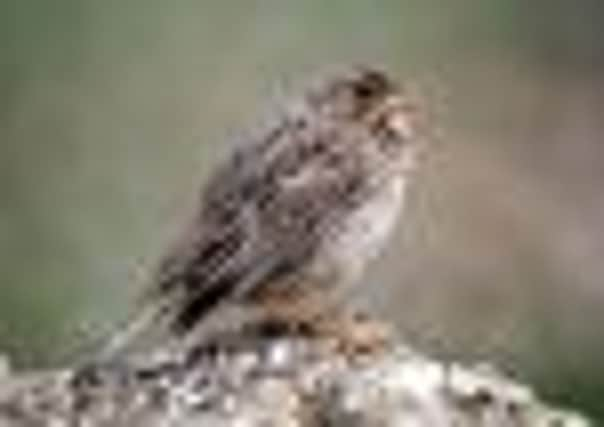Once-common corn bunting faces extinction from Scotland


The distinctive bird , known to farmers as “the fat bird of the barley”, is under threat because of intensified farming and harvesting techniques which deprive it of much of its favoured habitat. The bird was once so widespread it was known as the common bunting and considered an agricultural pest because it ate so much grain.
It is now an endangered species in the UK with only 800 pairs in Scotland, concentrated mainly in Aberdeenshire, Angus, Fife and the Uists.
Advertisement
Hide AdAdvertisement
Hide AdIn its Scottish “heartland” numbers have fallen by more than 83 per cent over just two decades, since 1989.
The study, by RSPB Scotland and the ecologist Dr Adam Watson, published today, covered 3,645 hectares of coastal farmland in eastern Scotland. Corn buntings disappeared from some sites during the study, and one Aberdeenshire population declined by 91 per cent from 134 pairs to just 12.
The joint study, published in the journal Ibis, found gradual changes in crop management, particularly an increase in field size and decrease in weed abundance, reduced the availability of safe nesting sites and food sources the species depends on.
As cereal crops have become less weedy, more corn buntings may now be nesting in grass silage fields where they are especially vulnerable to harvesting operations. Researchers also found the increase in field size reduced the availability of insect-rich field edge habitats and elevated song posts, such as fences, that males use when establishing and defending territories.
Dr Watson, who monitored the corn bunting population in each year of the 20-year study, said: “When I first studied this population in 1989 it was thriving, and I saw winter flocks hundreds strong.
“Last summer we only found one pair, which failed to rear any chicks. To me in 2012, the familiar farmlands seem silent and empty. It is tragic.”
Allan Perkins, conservation scientist at RSPB Scotland, said: “Intensive crop management and removal of field boundaries, resulting in fewer weeds and the insects they support, together with earlier harvesting of cereals and mowing of grass has had a detrimental effect on the corn bunting.
“This is a species that favours low-intensity farming and it is vital that such systems are preserved, or habitats replicated through agri-environment schemes.”
Corn buntings are a bit larger than a sparrow and favour open landscapes with cereal cultivation, and nest on the ground within growing crops or tall dense grass.